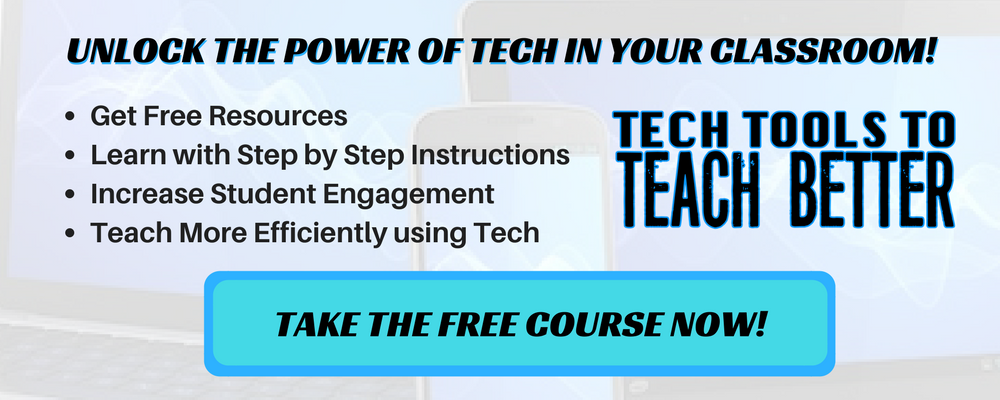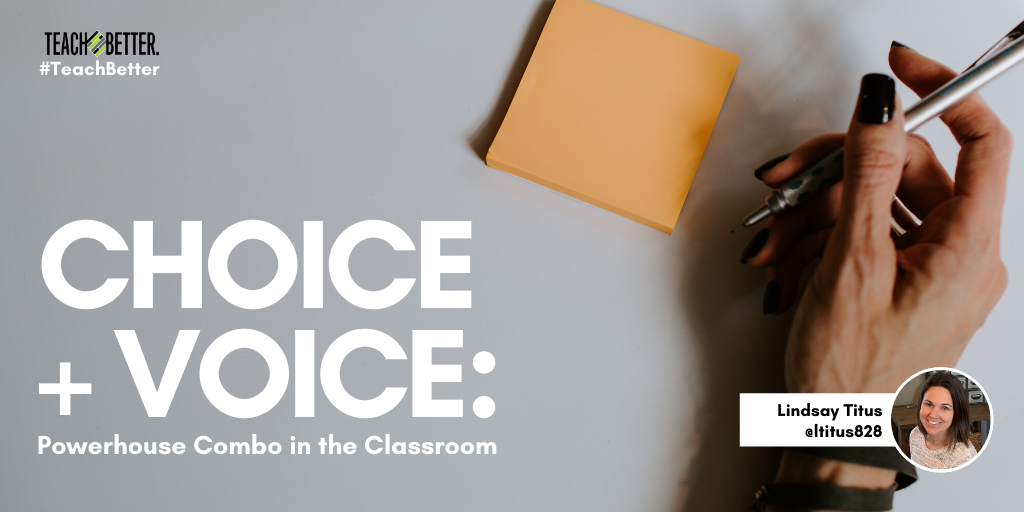TL;DR:
- Choice and voice are essential in order to engage students.
- Student choice is directly related to the concept of autonomy.
- Student voice is often communicated through their choices and behaviors.
It might be the teacher in me, but when words rhyme or have a strong sense of alliteration, I’m all for it! Two of my favorites? CHOICE + VOICE, a powerhouse combo in the classroom.
When it comes to having choice and voice, personally I think the why behind it is more important than the how. When we focus on the why, the how and the what come easier to us. It’s the why that can stump us, or may leave us standing in a classroom scratching our heads, saying, “they want me to do what?”
When we know the why behind something as powerful as choice and voice, not only do we become aware of it, we can also accept it. We can take action to create a classroom that is filled with autonomy and empowerment over expected compliance.
Providing choice is a simple and easy way to empower our students and truly ignite their passion for learning. Click To TweetI’m a big believer that what we teach kids to do is what they will do as adults; the behaviors we demonstrate as adults come from experiences we had as children. If I reverse this theory to what I teach children to do today is what is going to launch them into the future, then choice and voice automatically are added to the list.
Why? Because choice and voice are two things as adults we hold tight to every day. They are concepts that we want more of, so why wouldn’t our students want the same thing?
The concept of education is no longer one teacher teaching to a group of students. It is adults and children learning from each other. Learning is circular, meaning I learn from you and you learn from me. And I believe that happens through choice and voice.
Choice Can Be Simple and Easy

When we talk about incorporating choice into the classroom, it relates directly to the concept of autonomy. That is having the ability to choose, which can be something as simple as how I would like to be greeted in the morning, to something more complex such as what type of instruction works best for me?
Choice can include options related to how I demonstrate mastery of a learning objective, or as simple as filling my reading bucket with my preference for book genres.
Choice can look a variety of ways and as educators. This is where we can put on our creativity hats and have fun. Rediscover the passion we had when we entered into the field. Reignite the purpose we have as educators. Providing choice is a simple and easy way to empower our students and truly ignite their passion for learning.
[scroll down to keep reading]
With Choice, Comes Voice!

Voice is more than the verbal words coming out of our students’ mouths. Voice is shared through their behaviors; it is also communicated through their choices. Nonverbal cues provide a strong voice especially when we focus on body language and facial expressions!
I think it’s really important educators understand how students choose to share their voice in the moment that they do.
If the way they choose to share their voice is unexpected for the situation, then as educators we teach! We teach them a different way, a more functional way, and a simpler way, to express that same emotion, that same feeling, that same desire in a more expected way to better advocate for their needs.
As you reflect on your teaching, as you take a look at the opportunities for choice and voice in your classroom, I encourage you to start this reflection with celebrations! Highlight areas you are including choice and voice.
Then ask yourself, where can I take a step forward? How can I increase the choice and voice in my classroom? And with everything we do, let’s remember to start small, keep it simple, add in some strategy, and build your momentum one day at a time!
About Lindsay Titus
Lindsay Titus is a K-12 Behavior Specialist with a license in behavior analyst. As a Board Certified Behavior Analyst, Lindsay coaches and trains educators on the study of behavior and how to implement evidence based behavior principles in simple and easy ways! With experience as a classroom special education teacher, and behavior specialist in public schools, residential placement, and private settings, Lindsay enjoys working with all educators looking to reignite their passion for education, connect with all students, and conquer challenging behavior in any classroom setting.



